Hundreds of Kaiser Permanente health care workers on Maui go on strike, forcing temporary closure of Kīhei clinic
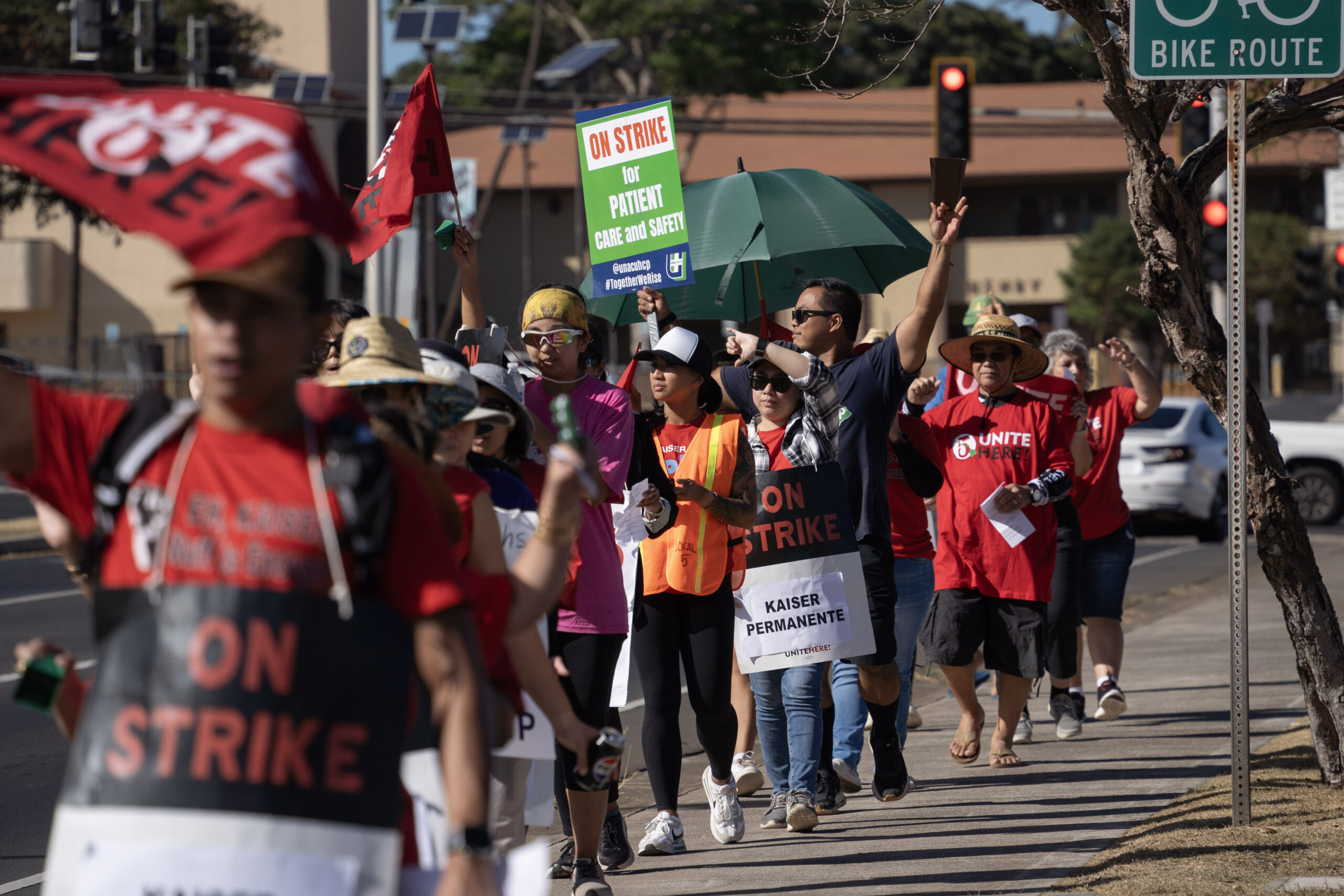
WAILUKU — Every day, Robert Kikuchi and three other full-time physical therapists at Kaiser Permanente’s Maui Lani Clinic see nine patients during their eight-hour shifts by squeezing some into lunch breaks and paperwork time.
“Patients are waiting four, sometimes six weeks to get appointments for when we should be seeing them weekly,” Kikuchi told the Hawai‘i Journalism Initiative. “We’ve been trying to get staff for years, and we just keep running into roadblocks.”
On Tuesday, Kikuchi joined about 2,000 workers in Hawai‘i who are going on strike for five days over concerns about staffing levels and salaries that they say are up to 30% less than their counterparts in other states.
More than 45,000 Kaiser workers with the Alliance of Health Care Unions in California, Oregon and Washington State also are on strike through Sunday morning. The alliance is made up of 23 local unions representing more than 62,000 Kaiser Permanente employees across the United States.
On Maui, the strike forced the temporary closure of Kaiser’s Kīhei clinic, which offers services that include a pharmacy, laboratory, optometry, pediatrics and physical therapy. Kaiser said the clinic’s providers and services have been shifted to other Kaiser locations on Maui.
Medical offices in Maui Lani, Wailuku and Lahaina remain open for regular operations and hours. Urgent care and the Ambulatory Surgery Center are still open and fully operational, as are the Mom and Newborn Center, eye care and other specialty centers.
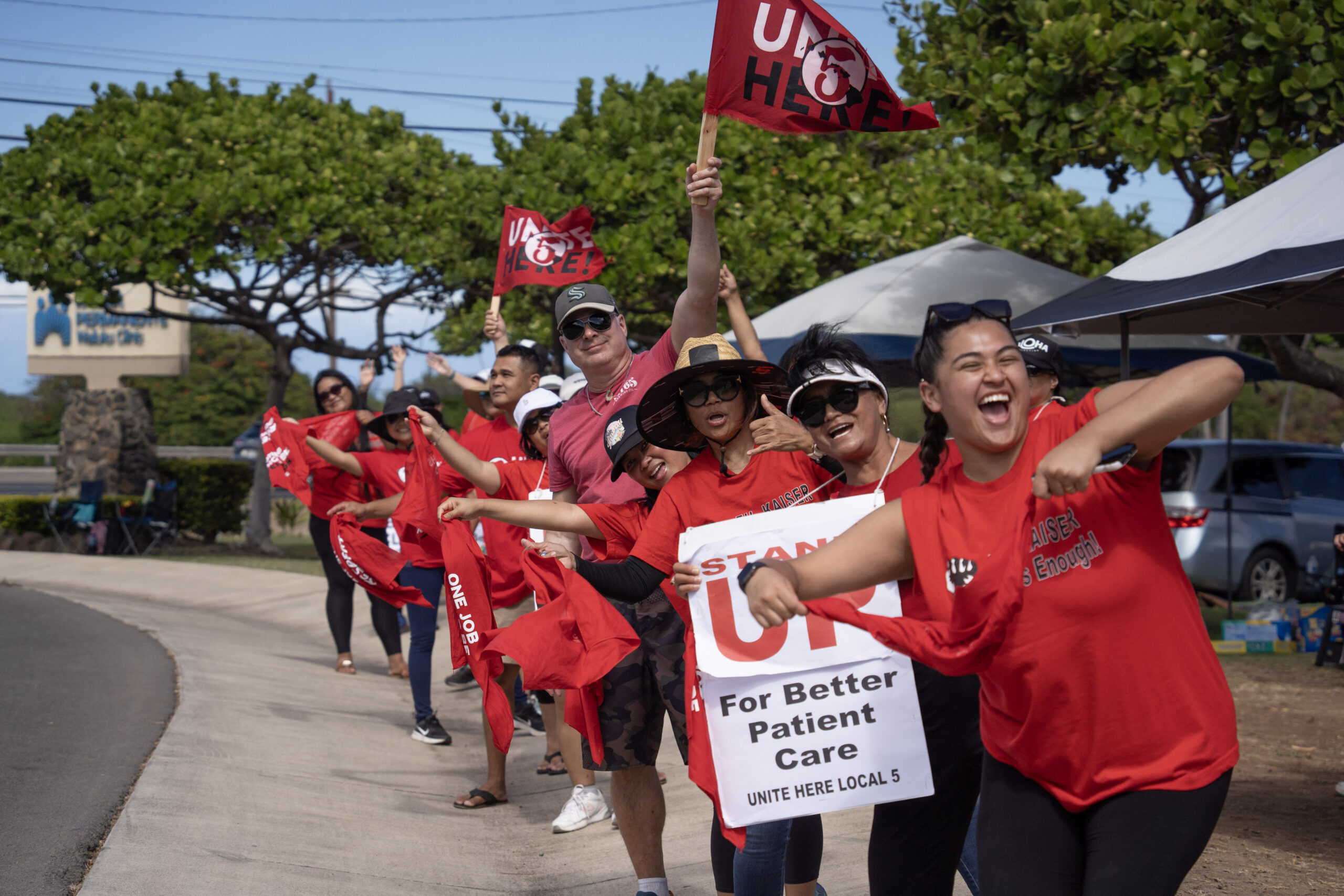
Kaiser officials said Tuesday there was no need for a strike after they made a “generous offer” for wage increases.
“While this strike is disappointing and unnecessary, we are prepared to resume negotiations after the strike to reach an agreement that balances fair pay for our employees with our obligations to deliver high-quality, affordable care,” Dionicia Lagapa, vice president of ambulatory care and clinical services at Kaiser’s Honolulu Clinic, said in a statement.
Lagapa urged patients not to cancel their appointments this week. In some cases, appointments are being shifted to virtual care, though others such as elective surgeries may need to be rescheduled. Kaiser is reaching out to patients directly if any of their appointments need to be adjusted.
Kaiser’s labs also are prioritizing urgent needs and cannot accommodate walk-in or routine testing at this time.
The health care provider also said it is onboarding up to 7,600 nurses, clinicians and other staff to work during the multi-state strike, most of whom are former Kaiser workers. More than 1,000 employees also have volunteered to be reassigned to work in strike locations.
On Maui, about 250 workers with the United Nurses Associations of California/Union of Health Care Professionals, also known as UNAC/UHCP, are on strike. They include pharmacists, certified registered nurse anesthetists and rehab therapists such as physical and occupational therapists and speech language pathologists.
About 130 workers with UNITE HERE Local 5 are on strike, too, representing medical assistants, hospital aides, lab assistants, dietary specialists, housekeepers and other workers.
Both unions had been in negotiations with Kaiser for several months before their current contracts ended Sept. 30.
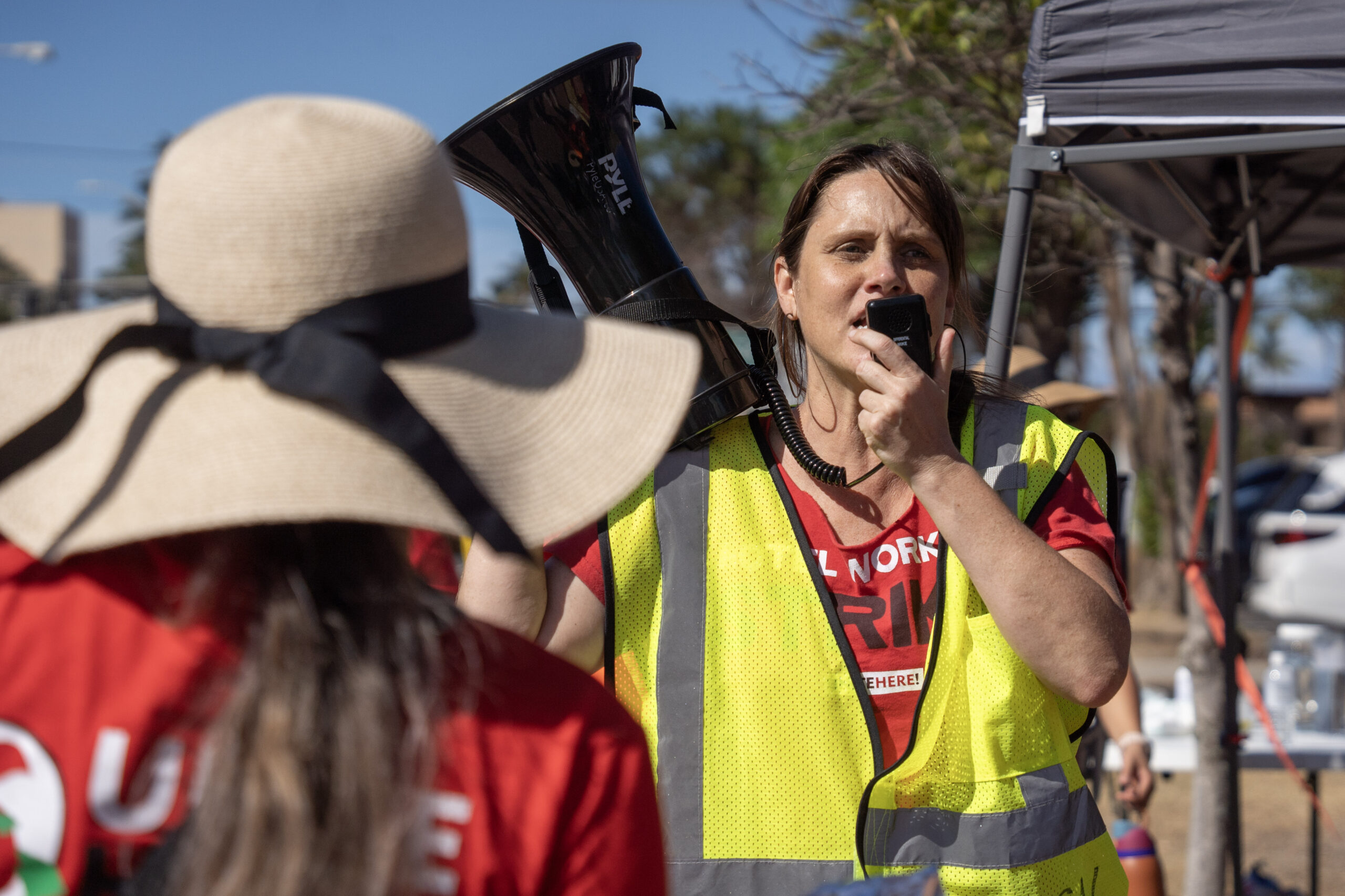
The top concerns for workers in both unions are staffing and salaries. Employees in Hawai‘i face one of the nation’s highest costs of living but get paid up to 30% less than their counterparts on the continent, Local 5 said.
Everyday costs, meanwhile, have continued to rise. UNAC/UHCP said that since signing its national agreement in 2021, inflation has gone up 18.5%, while its members’ wages have increased only 10%. The union is calling for a 25% wage increase over four years.
Kaiser counters that it compensates better than other health care providers in Hawai‘i — its workers are paid, on average, 16% more than their peers in the state, Lagapa said.
“Our latest offer increases already above-market wages by an additional 21.5% over the four-year contract,” she said. “The offer also enhances employees’ high value medical plan and retiree benefits.”
The health care provider said the 25% pay increase request is “out of step with today’s economic realities and rising health care costs” and would force it to increase its current $6.3 billion annual payroll, resulting in higher rates for members and customers.
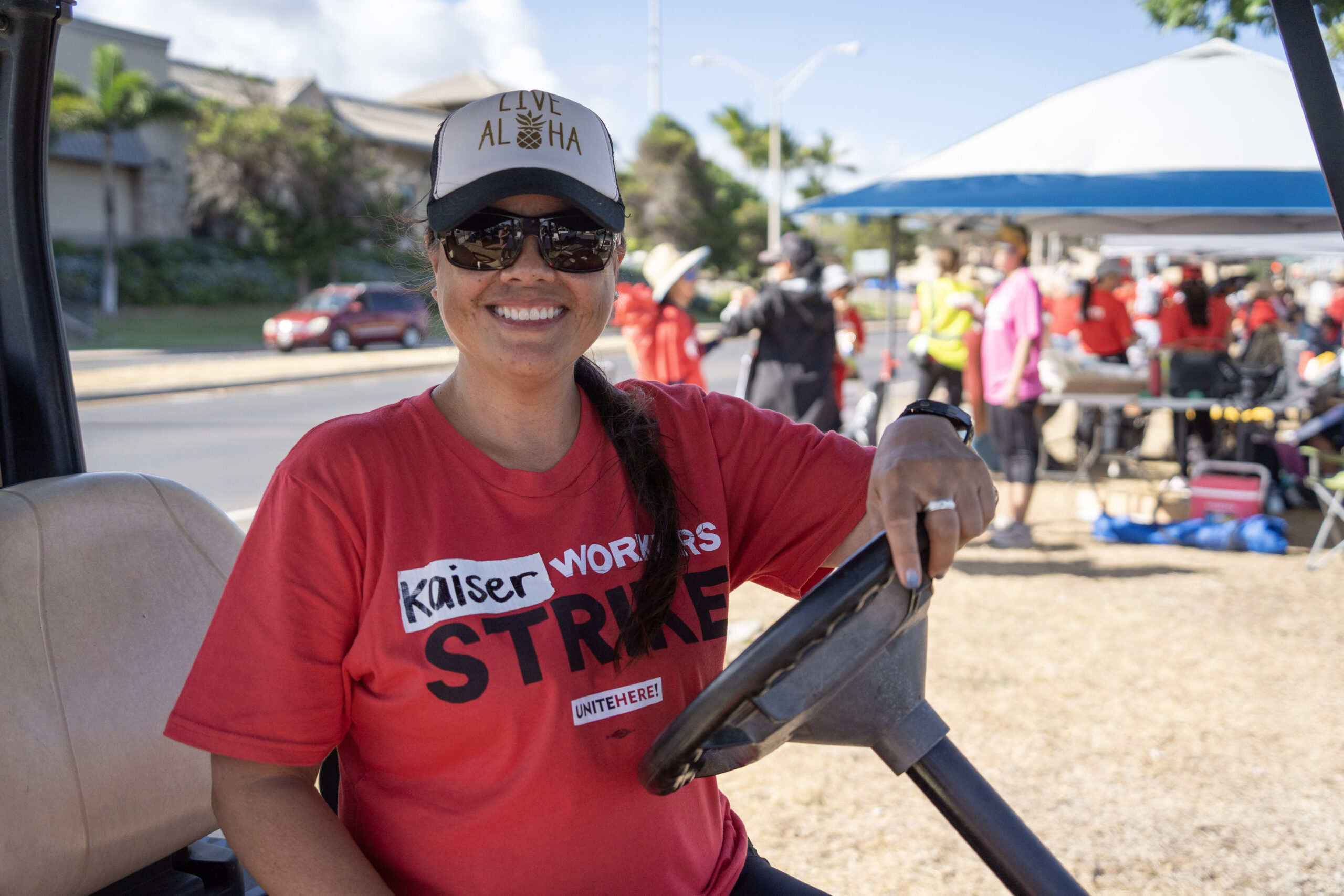
But workers say their salaries don’t always translate into affording Hawai‘i’s high costs. Jet Kailiehu has worked as a medical assistant for 17 years in the Maui Lani clinic’s urgent care. She said her salary is barely enough to make a living and that she’s able to make it work because her adult son lives with her and contributes to the household income. She said Hawai‘i workers just want parity with their peers on the Mainland and don’t want to feel like they’re “second class.”
Maui Lani pharmacist Julia Jeffery said the clinic has struggled to hire pharmacy technicians, and those she works with have to juggle side jobs “on top of working a long day at the pharmacy.”
“It’s a big sacrifice to step away from our patients for five days,” Jeffery said. “It’s hard to go without pay for five days, but we’re looking at the bigger picture of … what the future looks like. And if Kaiser is not willing to invest in the frontline workers, we simply can’t do that.”
Kaiser said in a statement that it uses “evidence-based staffing standards” that follow clinical guidelines and national best practices, are tailored to patient needs and allow for “real-time adjustments.”
“This flexibility is especially vital in Hawaii’s unique, geographically isolated environment, enabling us to effectively manage emergencies and maintain timely access to care,” Kaiser said.
The provider pointed to the recognition it has received for its care, including top rankings by the National Committee for Quality Insurance for its commercial, Medicare and Medicaid health plans in 2025, and awards for specialized and maternity care at Moanalua Medical Center on O‘ahu.
But at the clinics on Maui, workers say their patients have to weeks for appointments or hours to be seen once they arrive. During her 12-hour shifts in urgent care, Kailiehu said she has seen some patients wait four hours just to see a provider. At the short-staffed Maui Lani pharmacy, Jeffery said the lines are always long, even though “we’re all in there hustling all day, every day.”
Kikuchi, the vice president of UNAC/UHCP’s United Therapists of Hawai‘i chapter, said the problem is that there are more people coming in for care, but staffing levels haven’t changed. Even with a call-in therapist to assist the other four who work full time, it’s not enough, and they end up doing extra things like scheduling their patients’ follow-up appointments.
“They just keep adding things for us to do without adding people to do it,” he said.
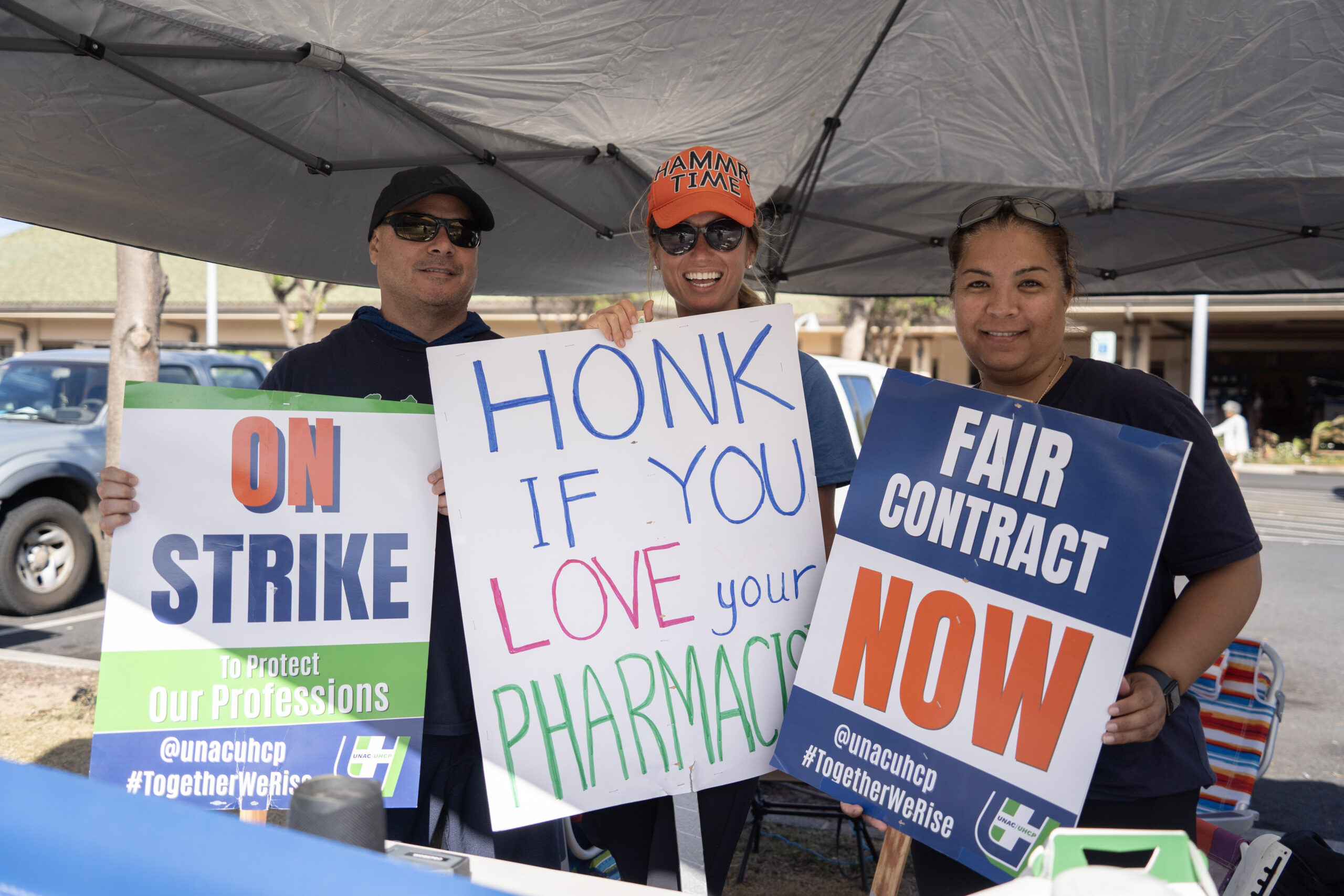
Hawai‘i’s high cost of living and struggle to retain workers have long been problems, and they tend to be reflected more on the Neighbor Islands. For example, the vacancy rate for medical assistants — one of the Kaiser groups on strike — was 13% in 2024, according to a report by the Healthcare Association of Hawai‘i. The vacancy rate for physical therapists, another group on strike, was 14%. On Maui, the rates were 19% for medical assistants and 18% for physical therapists.
Jackie Ponce, staff representative with UNAC/UHCP, believes the August 2023 wildfires played a big role in pushing a lot of families off island, making it harder to find good workers who are able to stay on Maui. Kaiser isn’t the only health care provider whose workers are frustrated with pay and staffing ratios. At Maui Memorial Medical Center, where Ponce has worked in patient financial services for 21 years, hospital workers with her union went on strike last year for three days and narrowly avoided a strike earlier this year after reaching an agreement with Maui Health.
The push for better wages and staffing, Jeffery said, is about making things work in the long term for both employees and patients, and “how can we make it sustainable, not just financially, but also mentally with the things that we’re asking for.”

